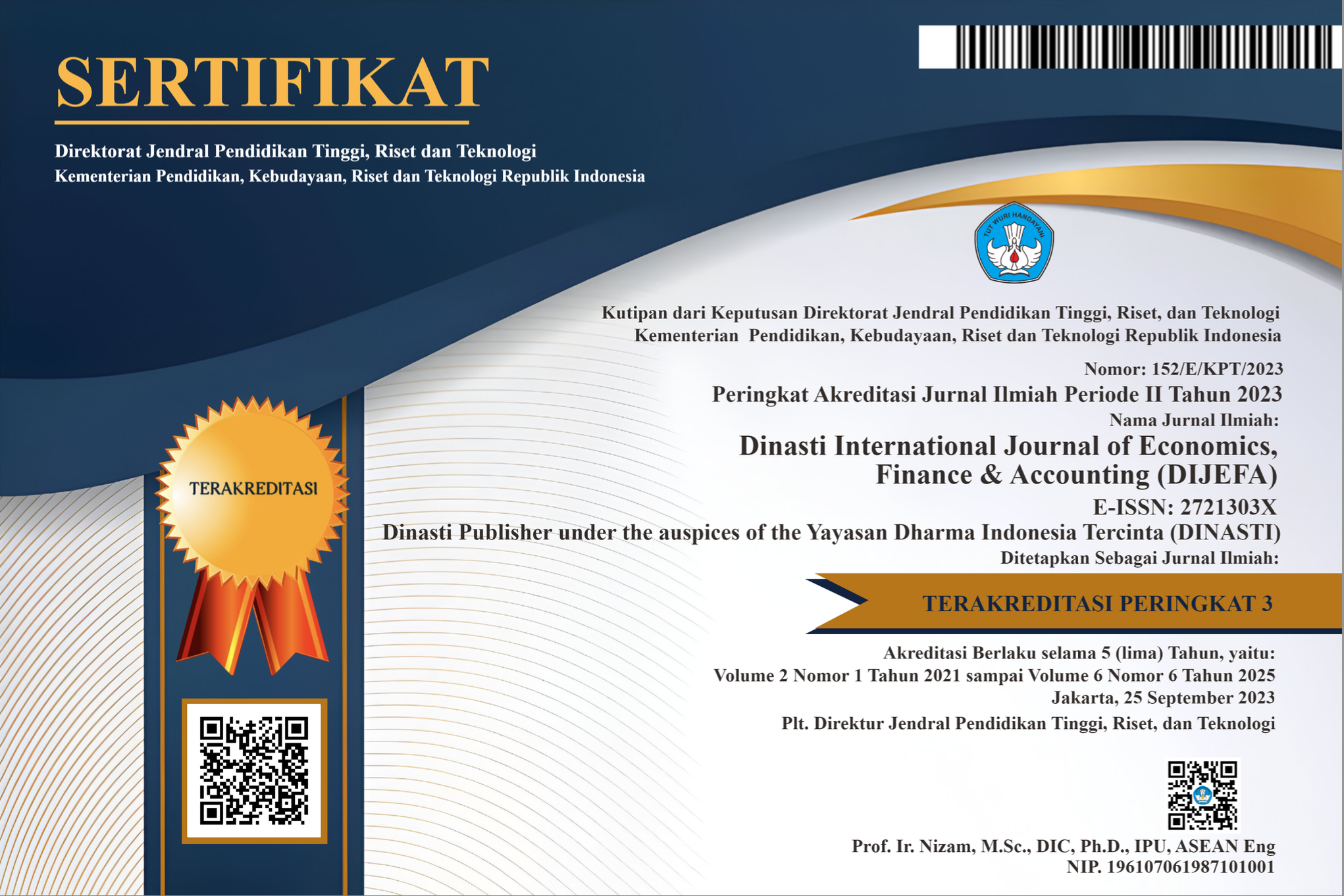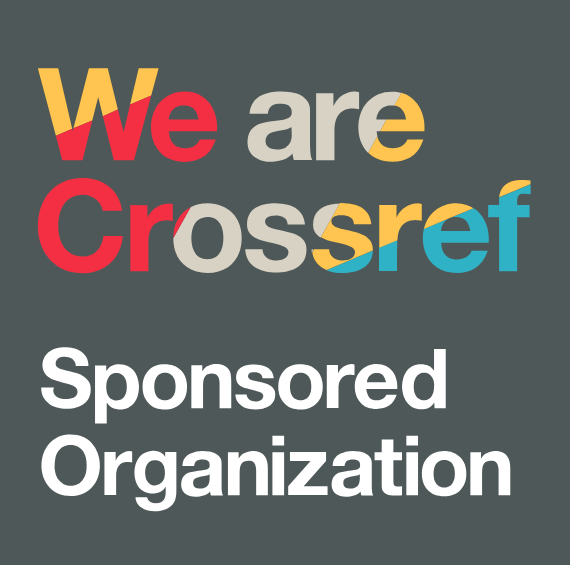THE MODEL OF EMPLOYEE’S PERFORMANCE OF ISLAMIC EDUCATION AGENCIES IN BANDUNG
DOI:
https://doi.org/10.38035/dijefa.v1i6.714Keywords:
Leadership, Organizational Culture, Interpersonal Communication, Work Motivation, Employee’s PerformanceAbstract
The purpose of this study was to know and analyze the Influence of leadership, organizational culture, and interpersonal communication toward work motivation and it’s implication to employee performance. The method used in this research were descriptive survey method and explanatory survey. The population in this study amounted to 254 employees of IEA (Islamic Education Agency in Bandung), with a sample size of 205 respondents. Analysis technique and hypothesis testing using Structural Equation Modeling (SEM) with LISREL 8.70 program. The result of research found that both partially and simultaneously leadership, organizational culture and interpersonal communication had positive and significant influence toward work motivation. Then also toward employee performance both partially and simultaneously leadership, organizational culture, interpersonal communication and work motivation had positive influence and significant. While, contribution percentage of leadership, organizational culture, interpersonal communication toward work motivation is 72% and contribution percentage of leadership, organizational culture, interpersonal communication, and work motivation simultaneous toward employee performance is 85%. The implication on this research is that the employee performance especially on the quantity will be able to be improved if IEA able to increase work motivation especially to the needs’ motivation, work motivation will increase if IEA is able to increase the leadership , especially in attitude dimension towards human, and increase the organizational culture especially to the internal integration, and supported by the improvement of interpersonal communication, mainly in social relationship. Furthermore, work motivation only have role for leadership and interpersonal communication variable toward employee performance, while for organizational culture variable, work motivation don’t have role to escalate employee performance, so in this model work motivation only as partial mediating.
References
Atmosoeprapto, Kisdarto.2001. Produktivitas: Aktualisasi Budaya Perusahaan, Mewujudkan Organisasi yang efektif dan Efisien Melalui SDM Berdaya. Jakarta. Elex Media Komputindo.
Bucahanan, David; Huczyski, Andrzej, 2005, Organizational Behavior an Introductory Text. Third Edition, Europe : Prentice Hall.
Colquitt, Lepine, dan Wesson . 2009 . Organizational Behaviour Improving Performance And Commitment Of The Workplace. New York: McGraw Hill
Daryanto. 2011. Ilmu Komunikasi. Bandung: Sarana Tutorial Nurani Sejahtera.
Depdiknas Direktorat Pendidikan Lanjutan Pertama Dirjen Dikdasmen . 2007. Manajemen Berbasis Sekolah. Jakarta: Dir. PSMP Dirjen Manajemen Dikdasmen Depdiknas.
Gomes, Faustino Cardoso. 2007. “Manajemen Sumber Daya Manusia”. Yogyakarta: Andi Offset.
Hartono, A., dan Sunanro. 2005. Perkembangan Peserta Didik. Jakarta: Rineka Cipta.
Hofstede, Geert, 2005, Culture’s Consequences, International Differences in Work Related Values. Sage Publication, Beverly Hills/London/New Delhi.
Jones, Gareth R. & George, Jenifer M., 2008 , Contemporary management. USA. Mc Graw Hill-International
Kotter, Jhon P. and Heskett, James L. 2002. Corporate Culture and Performance, New York: The Free Press, A Division of Mac Millan, Inc.
Kreitner, R, Kinicki, A. 2008. Organizational Behavior. New York: McGraw-Hill Companies, Inc.
Lensuffie, Tikno . 2010. Leadership untuk Profesional dan Mahasiswa. Jakarta: Erlangga
Luthans, Fred. 2011. Organizational Behavior:An An Evidence-Based Approach . New York : McGraw-Hill.Inc
Mangkunegara, A. Prabu. 2011. Manajemen Sumber Daya Manusia . Bandung : Remaja Rosdakarya.
---------------------------.2012. Evaluasi Kinerja Sumber Daya Manusia cetakan ke enam. Bandung: Refika Aditama.
Molenaar, Keith. 2002. Perilaku Organisasi. Buku 2. Jakarta : Salemba Empat
Muhammad, Arni. 2007. Komunikasi Organisasi. Jakarta. Bumi Aksara
Peterson W. Marvin, at. all. 2005, Planning and Management for a Changing Environment. San Francisco: Jossey-Bass Publishers.
Rivai,Veithzal. 2004. Manajemen Sumber Daya Manusia Untuk Perusahaan. Jakarta : Raja Grafindo Pustaka.
Robbins, Stephen P. Timothy A.Judge 2011. Organizational Behavior 14th Edition. New Jersey: Prentice Hall Inc
Robbins, Stephen P., 2009. Organizational Behaviour, Edisi Kesepuluh, Penerjemah : Molan B. Jakarta . Indeks
Schein, Edgar H. 2009. Organization Culture And Leadership. San Fransasisco. Jossey Bass.
-------------------- . 2009. The Corporate Culture Survival Guide. San Fransisco. Jossey Bass.
Sopiah. 2006. Perilaku Organisaional. Yogyakarta: Andi.
Sutrisno.Edy. 2011. Budaya Organisasi . Jakarta: Kencana Prenada Media Group
Thoha Miftah, 2007. Perilaku Organisasi; konsep dasar dan aplikasinya, Rajawali Pers. Jakarta.
Wagner, John A. III dan John R. Hollenbeck. 2010. Organizational Behavior: Securing Competitive Advantage. New York: Routledge.
Wibowo. 2012. Manajemen Kinerja . Jakarta . Rajawali Persada
Williams,C.2000.Management. Ohio: South-Western College Publishing.
Wirawan . 2013. Kepemimpinan : Teori Psikologi,Perilaku Organisasi,Aplikasi dan Penelitian. Jakarta: Raja Grafindo Persada.
Wiryanto. 2005. Pengantar Ilmu Komunikasi. Cetakan Ketiga. Jakarta: Grasindo.
Journal
Chen, Li Yueh. 2004. Examining the Effect of Organizational Culture and Leadership Behaviors on Organizational Commitment, Job Satisfaction, and Job Performance at Small and Middle-sized Firms of Taiwan. The Journal of American Academy of Business, Cambridge. 5.1/2.432
Diah Ayu , 2006, Penciptaan Sistem Penilaian Kinerja Yang Efektif Dengan Assessment Centre. Jurnal Manajemen, Vol.6,No.1
Femi, Asamu Festus. 2014. The Impact of Communication on Workers’ Performance in Selected Organisations in Lagos State, Nigeria .IOSR Journal Of Humanities And Social Science (IOSR-JHSS) Volume 19, Issue 8, Ver. II, PP 75-82 e-ISSN: 2279-0837, p-ISSN: 2279-0845.
Havidz, H. B. H., & Mahaputra, M. R. (2020). THE FACTOR WHICH INFLUENCE IT INFRASTRUCTURE: SOFTWARE, IT FLEXIBILITY AND ORGANIZATIONAL PERFORMANCE (STUDY OF MANAGEMENT INFORMATIONS SYSTEMS LITERATURE). Dinasti International Journal of Digital Business Management, 1(6), 1023-1031.
Hofstede, Geert, 2005, Culture’s Consequences, International Differences in Work Related Values. Sage Publication, Beverly Hills/London/New Delhi
Mahal, Kaur Prabhjot. 2009. Organizational Culture and Organizational Climate as a Determinant of Motivation. Research Scholar and Lecturer, Rayat Bahra Institute of Engineering and Biotechnology (MBA) India.
Mahmood, Iqbal dan Samsaa. 2014. “The Relationship between Role Ambiguity, Competency and Person-Job Fit With the Job Performance of Employees in the Service Sector SMEs in Malaysia”. Business Management Dynamics, Vol.1, No.2.
Mahyarni , Astuti M. 2011. Peran Strategis Manajemen Sumber Daya Manusia Dalam Meningkatkan Produktivitas Kerja Karyawan.ejournal.uin-suska.ac.id/index.php/Anida/article/download/292/275
Menon, Maria E, 2002,”Perceptions of Pre-Service and In-Service Teachers Regarding The Effectiveness of Elementary School Leadership in Cyprus”, The International Journal of Educational Management,16 February,91-97.
Neves and Eisenberger . 2012. Communication and Employee Performance:The Contribution of Perceived Organizational Support. Human Performance, 25:452–464, Copyright © Taylor & Francis Group, LLC ISSN: 0895-9285 print/1532-7043
Nguyen, P. T., Yandi, A., & Mahaputra, M. R. (2020). Factors That Influence Employee Performance: Motivation, Leadership, Environment, Culture Organization, Work Achievement, Competence And Compensation (A Study Of Human Resource Management Literature Studies). Dinasti International Journal of Digital Business Management, 1(4), 645-662.
Nguyen, P. T., Arifani, A. Z. T., Susanti, A. Y., & Mahaputra, M. R. (2020). LITERETURE REVIEW FACTORS AFFECTING EMPLOYEE PERFORMANCE: COMPETENCE, COMPENSATION AND LEADERSHIP. Dinasti International Journal of Economics, Finance & Accounting, 1(3), 538-549.
Owoyemi, Ekwoaba . 2014 . Organisational Culture: A Tool for Management to Control, Motivate and Enhance Employees’ Performance . American Journal of Business and Management Vol. 3, No. 3,, 168-177 DOI : 10.11634/ 216796061403514. ISSN 2167-9606 Print/ ISSN 2167-9614 Online/ World Scholars http://www.worldscholars.org
Rizal M, Idrus M S, Djumahir, Mintarti R. 2014. “Effect of Compensation on Motivation, Organizational Commitment and Employee Performance . Studies at Local Revenue Management in Kendary City.” International Journal of Business And Management Invention. Vol. 3, pp. 64-79.
Rogers. Edna. 2002. ”Relational Communication Process and Paterns” in Rethinking Communication.Vol 2.ed.Brenda Dervin et.al.,hlm .1.(at http: //www.Brocku.ca/ commstudies/course/2F50/Relationala.htm )
Suyatno, Thomas. 2006. Faktor-Faktor Penentu Kualitas Pendidikan Sekolah Menengah Umum di Jakarta. Jurnal Vol. 1 No.2. STIKS Tarakanita. Jakarta.
Downloads
Published
How to Cite
Issue
Section
License
Authors who publish their manuscripts in this journal agree to the following conditions:
- The copyright on each article belongs to the author(s).
- The author acknowledges that the Dinasti International Journal of Economics, Finance & Accounting (DIJEFA) has the right to be the first to publish with a Creative Commons Attribution 4.0 International license (Attribution 4.0 International (CC BY 4.0).
- Authors can submit articles separately, arrange for the non-exclusive distribution of manuscripts that have been published in this journal into other versions (e.g., sent to the author's institutional repository, publication into books, etc.), by acknowledging that the manuscript has been published for the first time in the Dinasti International Journal of Economics, Finance & Accounting (DIJEFA).


























































